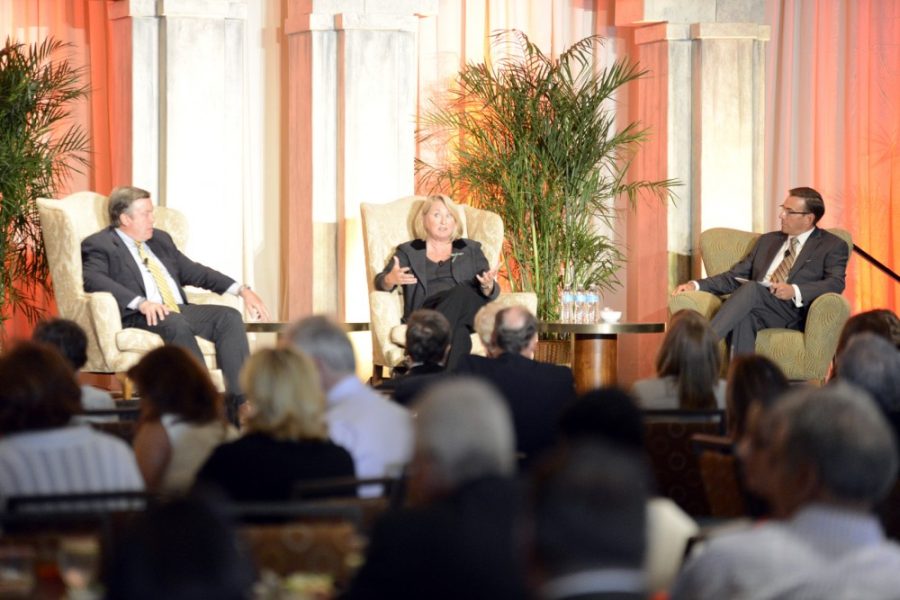The UA and ASU presidents jointly addressed the universities’ roles in economic growth and success in the state — a first for the annual TREO luncheon.
More than 600 business, government and academic leaders in Arizona gathered on Wednesday to listen to the presidents at Tucson Regional Economic Opportunities’ eighth annual luncheon at the Westin La Paloma Resort and Spa. UA President Ann Weaver Hart and ASU President Michael M. Crow discussed the importance of fostering talent in the workforce in order to reach economic goals in step with the state.
The discussion focused on how talent leads to economic growth, the role of universities in fostering this talent and how the community will work with the universities to reach this goal.
Hart said the definition of talent needs to become more flexible in order to further economic goals.
The idea that students take on one major and learn one skill is outdated, according to Hart.
“You have to disrupt those conventional boundaries in order to make people feel free to do what needs to be done in the new economy,” Hart said.
Research, while conventional, must also be innovative in order to assist the community, Hart added.
Categorizing majors and setting boundaries in academics prevents the UA from developing new ways of educating its students, according to Hart.
“The boundaries around disciplines that we have drawn don’t serve cutting-edge knowledge,” Hart said, “so it limits [students’] ability to be successful.”
Crow focused more on the idea of the Tucson and Phoenix metro areas working together to compete against other growing regional cities. Hart said she and Crow both believe working together to produce talent for the state is key. Traditionally, Hart added, Tucson and Phoenix compete against each other instead of pulling together to compete against other cities.
In order to have successful economic growth, Crow said, community leaders and university presidents need to take into account what the community wants and make a plan to reach that goal while keeping their competitors in mind. Some of these goals for the community, Crow said, include higher graduation rates and more opportunities to advance in the workforce.
“You have to be able to put everything on the table for the community to be able to obtain those objectives,” Crow said.
At the end of the luncheon, audience members asked Crow and Hart questions, one of which focused on the role of arts and culture in the state’s economic growth.
Hart said making existing resources, such as museums, more accessible to the community is an important part of the state’s growth. Crow went further to say investment in culture and the arts is necessary for successful economic development.
Javier Duran, director of the Confluence: Center for Creative Inquiry, said he was pleased to hear about the role of the arts in the economy and in the community. According to Duran, the center’s main goal is to connect the UA to the Tucson community through cultural events and collaboration.
“It also signals that the mission of the Confluence Center is perfectly aligned with the mission of our university and the leadership that we’re taking in the state,” Duran said. “I was really excited to hear [that].”
– Follow Stephanie Casanova @_scasanova_









